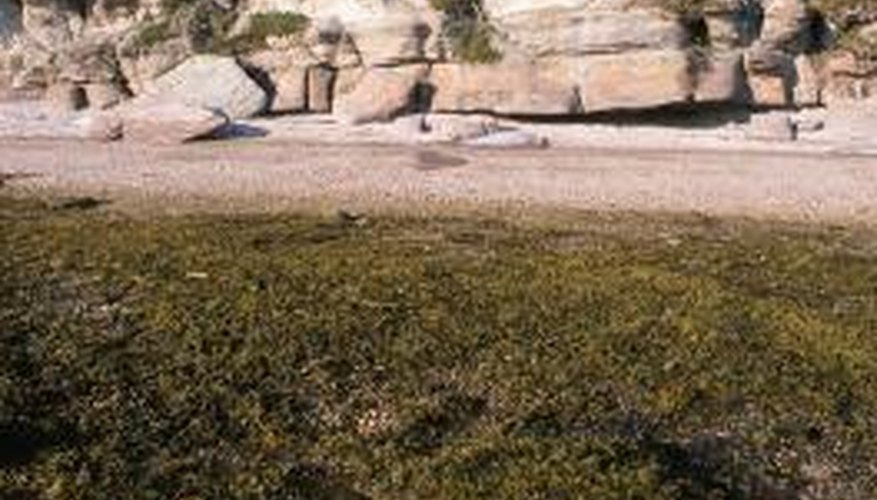Marine flowering plants and seaweeds are similar plants that share a home in saltwater. They are both important parts of the oceanic and other saltwater ecosystems, often filling some of the same roles. Because of this, they may be confused for one another, but there are a number of key attributes that differentiate the two.
Seaweed
"Seaweed" is often used as an all-encompassing term for any saltwater plant life. In fact, "seaweed" only refers to red, brown, blue and green algae that float on top of the water or cling to other plants or rocks. Seaweeds have no root system of their own, and are generally found in shallow waters where the sunlight can reach them. Seaweeds also do not flower.
- "Seaweed" is often used as an all-encompassing term for any saltwater plant life.
- Seaweeds have no root system of their own, and are generally found in shallow waters where the sunlight can reach them.
Marine Flowering Plants
Marine flowering plants are more commonly known as "seagrass," and are often mistaken for seaweed. The main difference between the two is that seagrass must have an anchoring root system, as opposed to free-floating or clinging algae. Seagrass also flowers to reproduce. The flowers pick up pollen that is carried by water from other seagrass. Seagrass can grow completely submerged in water, as opposed to some kinds of seaweed which float on the surface to collect sunlight.
- Marine flowering plants are more commonly known as "seagrass," and are often mistaken for seaweed.
- Seagrass can grow completely submerged in water, as opposed to some kinds of seaweed which float on the surface to collect sunlight.
Difference in Location
Seaweed and seagrass often occupy the same spaces, but because of their structural differences they also have areas that each uniquely occupies. Seaweed's reliance on direct sunlight for photosynthesis confines it to shallow waters. Rocky shores are the most common place to find seaweed clinging to rocks or shallow beds. Seagrass, however, needs less sunlight and can be found deeper than seaweed. Its use of roots also means that it does not need to find rocks or other underwater structures to cling to.
- Seaweed and seagrass often occupy the same spaces, but because of their structural differences they also have areas that each uniquely occupies.
- Seagrass, however, needs less sunlight and can be found deeper than seaweed.
Difference in Use
Seaweed and seagrass also differ in their respective uses. Both provide cover and nourishment for many forms of sea life, but only seaweed is harvested by humans for nutritional use. Many kinds of algae are used in puddings, ice creams and jellies. The gelatinous nature of algae also makes it useful in some cosmetics as well as some textiles.
- Seaweed and seagrass also differ in their respective uses.
- Both provide cover and nourishment for many forms of sea life, but only seaweed is harvested by humans for nutritional use.
